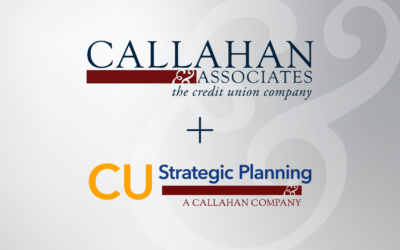However, any flaws in the benchmarking process can lead to inaccurate perceptions of your credit union’s performance. That’s why you’ll want to avoid these five common pitfalls that can lead to errors in your analysis.
- Imprecise Peer Groups
Peer groups based solely on asset size or geographic proximity don’t account for the wide range of other factors that can impact performance. Adding measures like field of membership, charter type, and operational metrics as criteria creates more accurate peer groups by narrowing your peers to only those that are most similar to your credit union. - Benchmarking Infrequently
The credit union industry is dynamic. Therefore, annual benchmarking can mask performance lags and prevent your institution from making timely operational changes. Whether it’s pricing strategies, interest rates, or housing market prices, the definition of credit union success is continuously changing, making it imperative to benchmark at least quarterly. - Limiting Potential Peers
If banks are competing in the same market, they should be part of your benchmarking analysis. While differences in the NCUA and FDIC reporting formats are an obstacle, tools like Callahan’s Peer-to-Peer make it possible. Instead of market-to-market comparisons, which may not be useful due to operational and business model differences, consider using bank peers when looking at market share, setting market-based growth goals, and identifying market trends. - Not Excluding Your Institution from Peer Groups
Including your own institution in peer groups can skew your benchmarks, preventing you from getting a true representation of your peers and the competitive landscape. The metrics you are measuring may change directionally without your institution in the mix, depending on economic factors and individual credit union performance. - Assuming Average is Excellent
Using peer averages may give insight as to how the group is performing directionally but should not be used as a measurement of excellence. The average will hide outliers both under and outperforming the peer group. Peer group averages can be used to set a baseline, but generally should not be used as a goal unless using an aspirational peer group consisting of high-performing credit unions.
Callahan can help you avoid these pitfalls.
More than 600 credit unions across the county and asset-sizes rely on Callahan’s data and analytics programs Peer-to-Peer, CUAnalyzer, MortgageAnalyzer, and BranchAnalyzer to accurately measure and track their credit union’s performance versus other credit union peers and banking competitors.
Callahan clients can access their benchmarking tools on their client portal.
Not a client? Learn how to optimize your benchmarking to make better informed strategic decisions.
More Blogs
Navigating The NCUA’s 2024 Supervisory Priorities
In today's changing financial landscape, credit unions face a host of challenges when it comes to maintaining stability and ensuring member protection. Recently, the National Credit Union Administration (NCUA) outlined its supervisory priorities for 2024, highlighting...
Callahan & Associates and CU Strategic Planning Combine To Increase Credit Union Impact
Callahan & Associates and CU Strategic Planning proudly announce their strategic alliance, driven by a shared vision to empower credit unions to make a meaningful impact on their members and communities.
Insights And Advice For Credit Union Leaders
Are you new to a leadership role or preparing for one? Are you focused on empowering future leaders? Are you a veteran leader looking to be inspired? We recently asked new and established leaders what it means to embrace different leadership styles, encourage culture changes, and what advice they have for the next generation of leaders.
5 Governance Tips for Credit Union Boards
Insights From Callahan Consultant, Chris Howard There’s a growing — albeit misguided — distrust of credit unions today, making effective governance more important than ever … and harder than ever. At its core, good governance is fairly simple, although never...
15 Key Ratios Every Credit Union Board Should Know
There are thousands of data points you can share with your board about your credit union’s performance, the industry, and the economy. The challenge is identifying which key ratios are most important to your credit union. If you’re looking for a list of key ratios and...
Why Great Lakes CU Is Betting Big On Partnerships
Last week, Callahan & Associates hosted the inaugural installment in its "A Conversation With..." webinar series, featuring Great Lakes Credit Union CEO Steve Bugg. In the exclusive conversation, Bugg emphasized the value partnerships can bring to the industry and...
Browse 5300 Call Reports With Ease.
Every CU 5300 Call Report – Instantly And Seamlessly. If your goal is to reach more credit unions with your products and services, you likely know all too well how long it takes to pull 5300 Call Reports for dozens of prospects to fuel your sales pipeline and...
How Sales Teams Work More Efficiently In Peer Suite
Is your team spending countless hours manually pulling reports and compiling data for your credit union prospects? Are you looking for a more efficient way to collaborate with your team and onboard new members? Callahan’s Peer Suite helps credit union suppliers...
Ultimate Benchmarking Guide For Credit Unions
What Is Benchmarking? Benchmarking is the interpretation and analysis of financial information in order to make direct performance comparisons to other credit unions, banks, and customized peer groups. It enables a credit union to track internal goals, identify...
How Interra Is Advancing Its Purpose Journey
Several years ago, the five-member executive team of Interra Credit Union ($1.7B, Goshen, IN) participated in a virtual learning experience from Callahan & Associates offered in collaboration with Harvard Business School Online.










